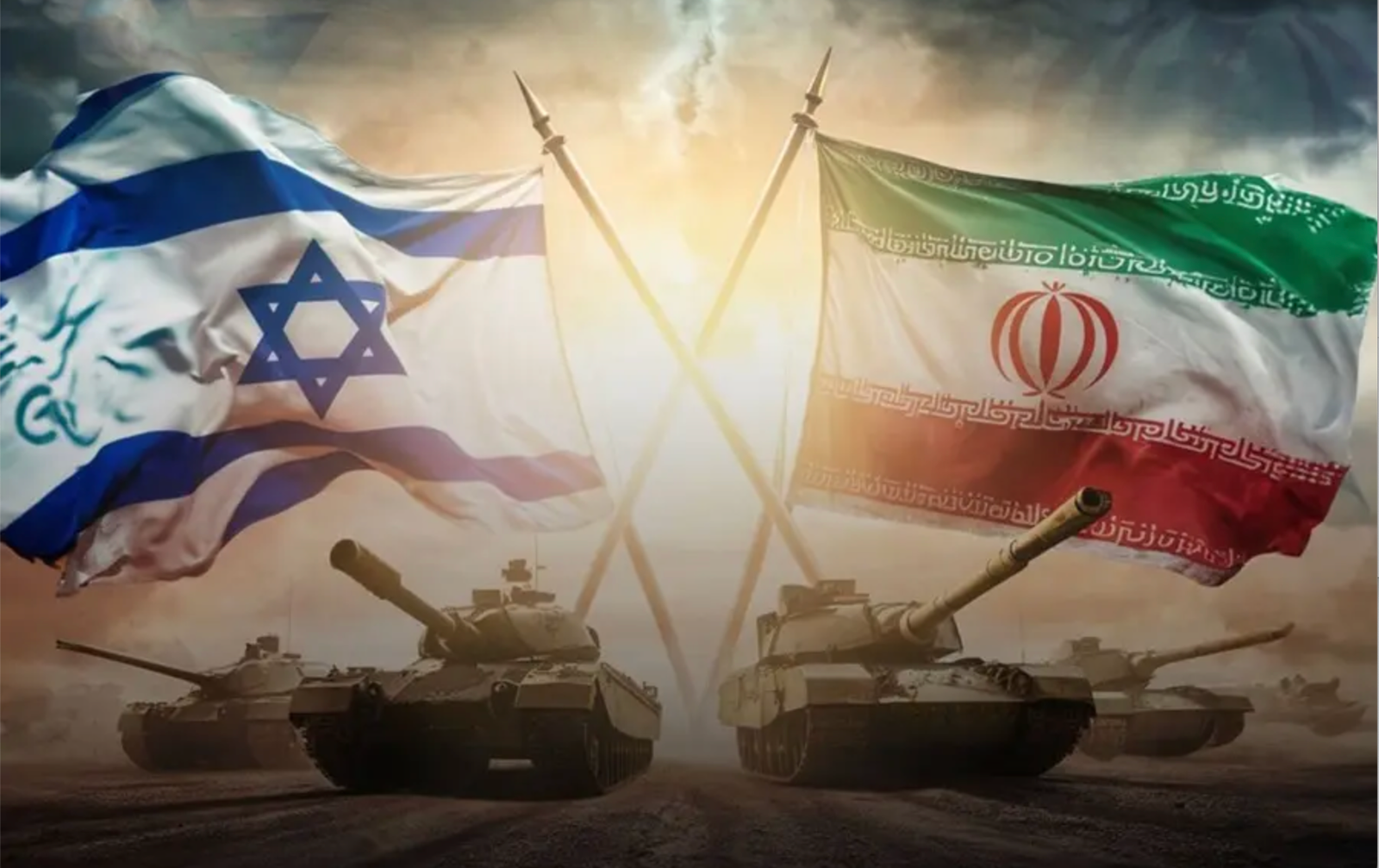What Do Israel–Iran Conflicts Reveal About the U.S.–China Rivalry in the Middle East?
By Sherry Chen
Introduction
The Israel–Iran conflict in June 2025, triggered by Israel’s airstrikes on Iranian nuclear sites and quickly escalated with U.S. bombing of Fordow, Natanz, and Isfahan, marked a pivotal moment in Middle Eastern geopolitics. As President Trump framed the operation as a clean victory—emphasizing zero U.S. casualties and decisive strikes—global analysts and think tanks like Center for Strategic and International Studies (CSIS) warned of long-term consequences, from Iranian retaliation to nuclear non-proliferation fallout. Beyond the immediate headlines, the episode offers a revealing window into the evolving U.S.–China rivalry: how both powers assert influence, manage risk, and contest legitimacy in a volatile region that remains critical to global order.
The United States Reasserts Military Dominance
President Trump’s instagram posts following the strike showcased American air power as the cornerstone of deterrence. B-2 bombers and Tomahawks, coordinated with Israeli defense systems, reportedly caused “monumental” damage to Iran’s nuclear infrastructure. Trump’s social media narrative emphasized surgical precision and a strong message to Iran: any retaliation would be met with overwhelming force. His framing cast the United States not merely as Israel’s security guarantor but also as a regional stabilizer through hard power. Independent verification largely confirmed the strike’s tactical success. Think tank experts such as Emily Harding at CSIS argued it was likely the “right call”—a calculated move to prevent nuclear breakout without triggering regime collapse.
However, CSIS panels and broader expert commentary revealed layers of uncertainty beneath the surface success. Iran’s nuclear knowledge base remained intact; retaliation through proxies or oil market disruption remained possible. Still, the operation underscored a key reality: the United States retains the unmatched capability to quickly project force in the Middle East. This ability to decisively shape events within a 24-hour window—militarily, diplomatically, and symbolically—is something China has yet to demonstrate. The strike served as a strategic reminder: while America may be recalibrating its global commitments, its dominance in rapid hard-power response remains unparalleled.
China Restrains with Strategic Caution and Economic Stake
China’s response to the Israel–Iran crisis has been one of strategic restraint rooted in both legal positioning and economic interest. It issued standard calls for de-escalation, urged respect for sovereignty, and emphasized dialogue, yet China avoided explicit alignment with either side. Despite its increasing regional presence, especially after brokering the 2023 Saudi–Iran rapprochement, Beijing remained diplomatically passive during the 2025 conflict. According to Wang Yi, State Councilor and China’s foreign Minister, “China supports Iran in safeguarding its national sovereignty and security, and on that basis, achieving a genuine ceasefire so that people can return to normal life. Military strikes on nuclear facilities that are under safeguards of the International Atomic Energy Agency seriously violate the purposes of the UN Charter and international law.” This cautious stance reflects both risk aversion and structural limitations: China lacks military alliances in the region and has limited capacity to secure or evacuate its nationals, let alone conduct high-stakes precision operations.
Yet China’s economic footprint in the Middle East is expanding. Iran, sanctioned and isolated, has become a major recipient of Chinese investment under the Belt and Road Initiative (BRI). Chinese firms have stakes in oil, infrastructure, and technology across Iran, Iraq, and the Gulf. China is now the largest buyer of Iranian oil, often via indirect or shadow trade routes. During the conflict, reports suggested China activated floating storage to ensure continuity in supply chains, indicating that its interest is less ideological and more logistical: ensuring energy security and economic continuity.
However, this economic entrenchment also binds China to regional stability—without the tools to enforce it. The Israel–Iran conflict exposed Beijing’s dilemma: it is deeply invested, but diplomatically limited and militarily absent. Unlike the United States, China cannot yet intervene, mediate, or retaliate with credibility. This asymmetry defines a crucial frontier in the U.S.–China rivalry.
Competing Models of Influence
The Israel–Iran conflict illuminated the contrast between American and Chinese models of influence. The United States still relies on traditional pillars: military power, strategic alliances (especially with Israel, Egypt, and Jordan), and deterrence-based diplomacy. The Trump administration’s rapid military response highlighted a model of crisis dominance—swift action, maximum pressure, and psychological edge. American messaging, while unilateralist in tone, demonstrated a clear chain of escalation and de-escalation capability, reinforced by global media coverage and institutional analysis.
China, in contrast, pursues indirect leverage through economic interdependence. It avoids overt alignment, preferring to portray itself as a neutral power and development partner. Its success in brokering the 2023 Saudi–Iran deal was a high point for its soft power, but the 2025 conflict revealed its limitations in fast-moving, high-risk scenarios. China cannot yet guarantee security outcomes or deter escalation. Moreover, its “non-interference” doctrine begins to crack when economic assets are at stake.
Thus, while China’s influence may rise in times of peace and trade expansion, the United States still dominates the narrative and the tools of war. The Middle East remains a region where legitimacy is not just earned through investment, but demonstrated through action—and for now, the United States remains the actor capable of both.
Middle East as a Strategic Mirror
The events of June 2025 demonstrate that the Middle East continues to serve as a mirror of global power dynamics. Regional players such as Saudi Arabia, the UAE, and Egypt are not passive bystanders; they actively hedge between Washington and Beijing, balancing security dependence with economic diversification. Israel’s deep alignment with the United States coexists with Gulf states increasingly welcoming Chinese capital, infrastructure, and tech investment. This dual engagement signals not a binary choice, but a diversified strategy of survival and leverage.
The conflict also revealed how each superpower’s global strategy plays out regionally. The United States engages through visible power projection, narrative control, and alliance enforcement. China inserts itself through strategic patience, economic offers, and diplomacy-by-trade. But when a crisis hits, only one power can immediately act, recalibrate, and restore a form of regional order. The asymmetry is not just in capabilities, but in expectations: the world expects the United States to respond; it tolerates China’s silence.
For Middle Eastern states, this reality reinforces a strategic logic of duality: rely on the United States for making peace; expect on China for development. The region becomes not just contested terrain, but a testing ground for how both powers define and execute global leadership in an age of multipolar uncertainty.
Conclusion
The Israel–Iran conflict was not merely a regional flashpoint—it was a revealing episode in the broader U.S.–China strategic competition. While the United States reaffirmed its hard power supremacy, China’s economic entrenchment was exposed as diplomatically cautious and militarily constrained. This asymmetry demonstrates a central truth of today’s global order: influence without credible enforcement remains incomplete. In the Middle East, where crises proceed quickly and violently, power is still measured by who shows up, not just who invests. And for now, the United States still shows up first.

Sherry Chen is a Research Associate at South China Sea NewsWire (SCSNW), a regional news and analysis platform focused on political, economic, and strategic developments in the South China Sea, and is currently studying in a dual program between Columbia University and Sciences Po Paris.


